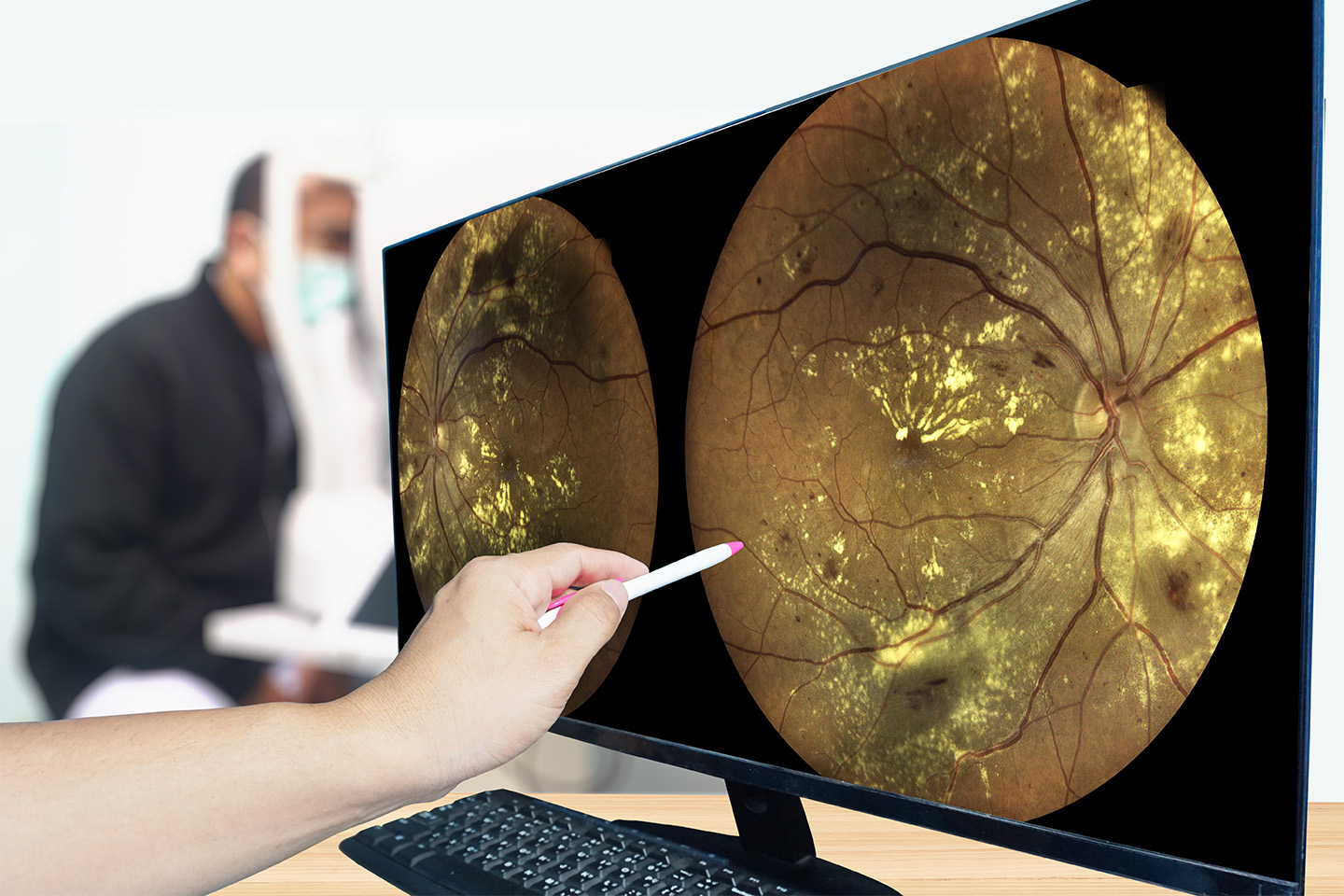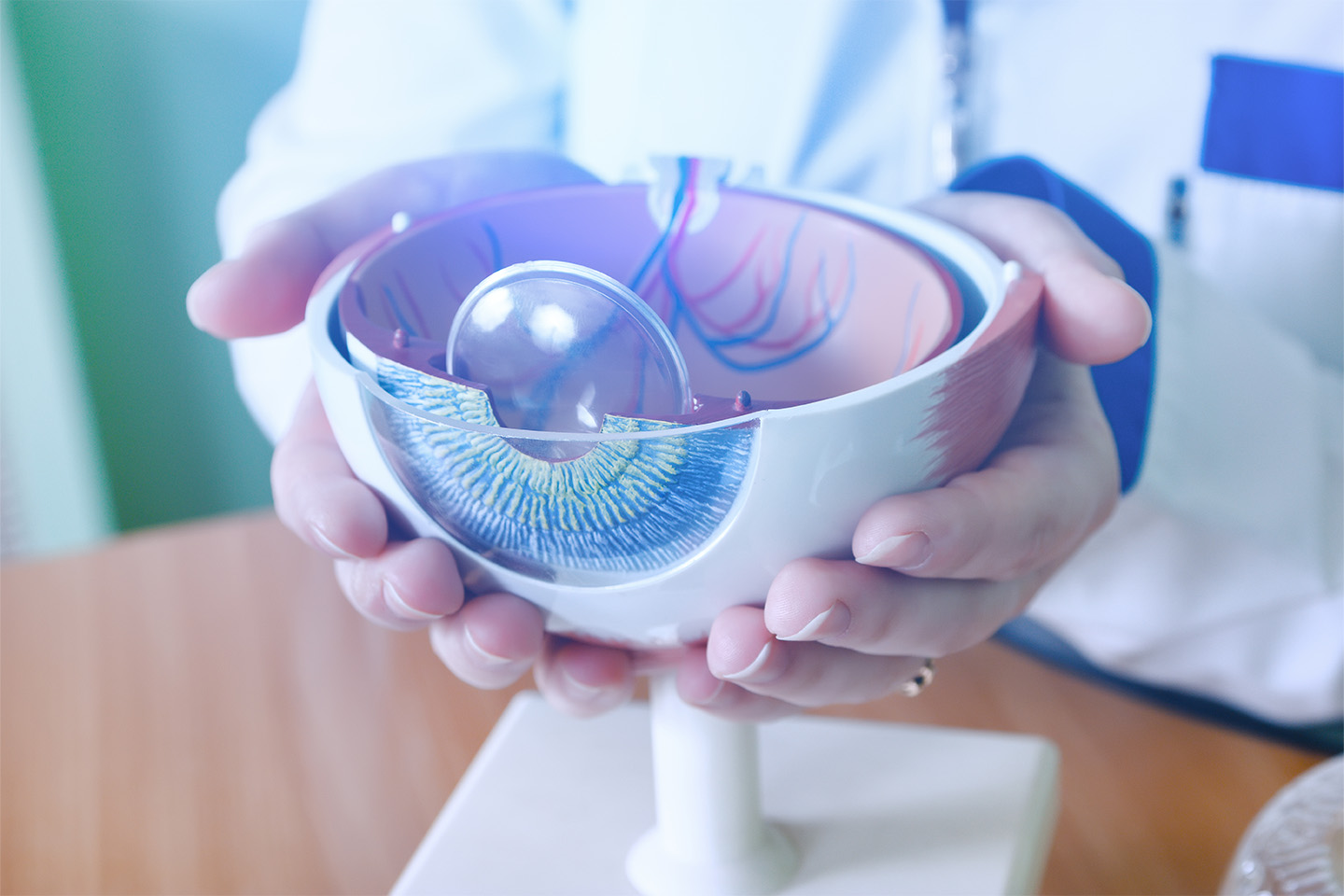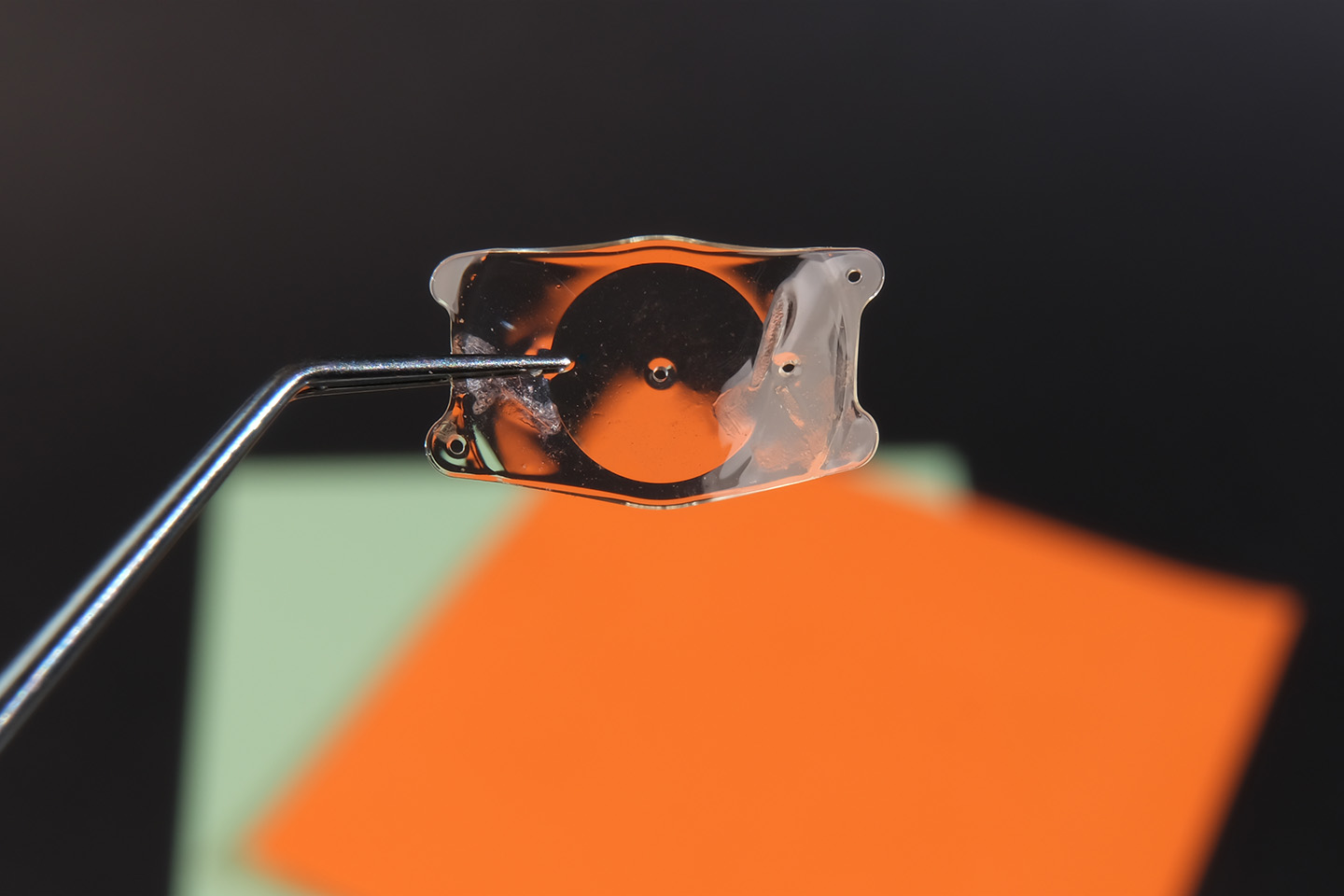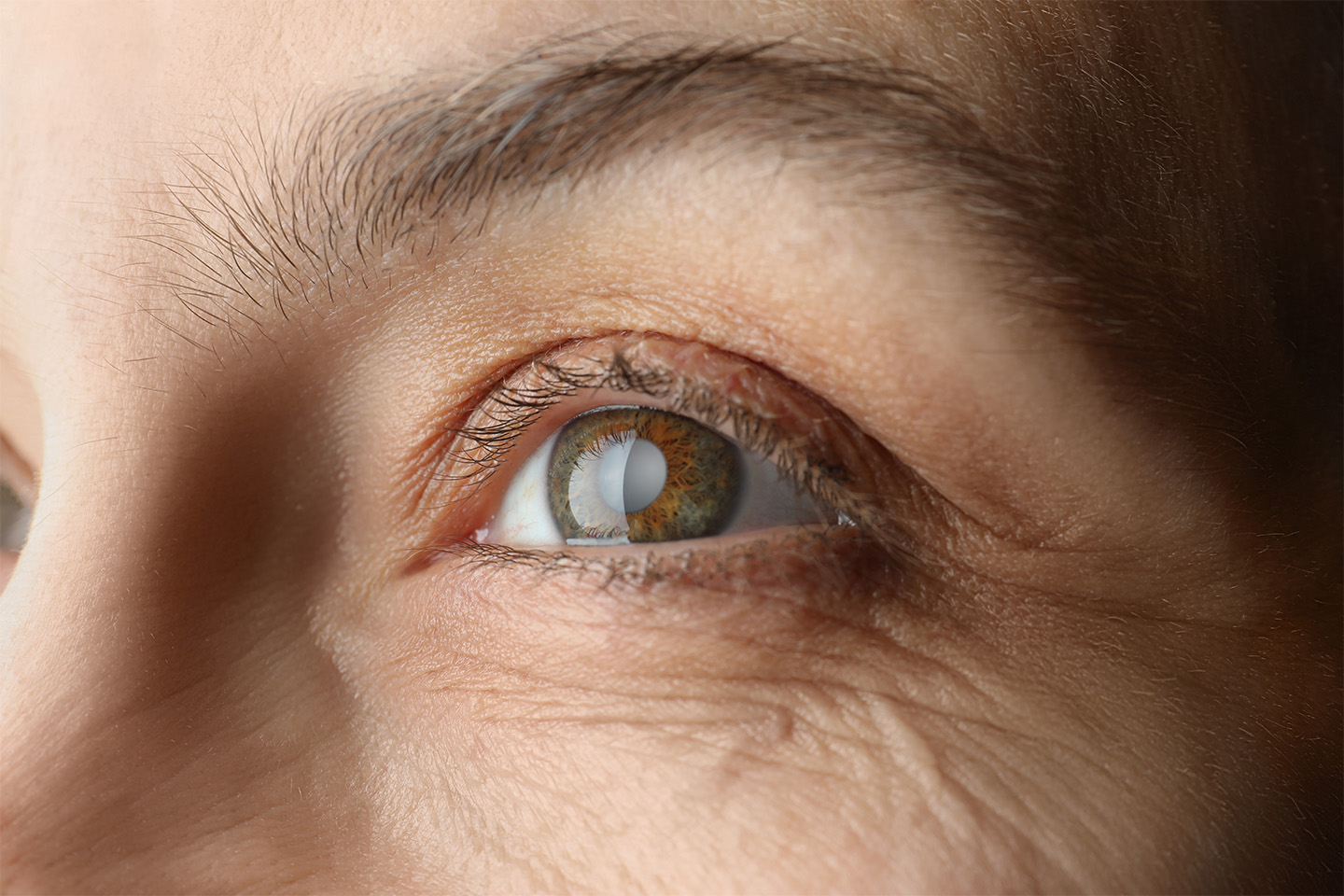Wet vs. Dry Macular Degeneration

Age-related macular degeneration (AMD) affects many people over the age of 50 and robs them of their central, straight-ahead eye sight. Unlike glaucoma, which effects a patient’s peripheral vision, macular degeneration cause a blurriness, and eventual blind spot, in the center of a patient’s field of vision, leaving their peripheral vision intact. While AMD typically doesn’t lead to complete blindness, the loss of central sight can have a major impact on daily activities, such as driving, reading and recognizing faces.
What is Macular Degeneration?
The macula is part of the retina and is comprised of light-sensing cells. These cells are responsible for focusing your central vision into sharp images. Patients with AMD experience a change in their macula, which reduces the eye’s ability to focus clearly straight ahead and eventually to see straight ahead at all.
There are two types of macular degeneration. While both effect older adults and drastically reduce central eyesight, their exact causes are different.
Dry Macular Degeneration
Dry macular degeneration is the far more common type of this disease, affecting about 90% of macular degeneration patients. In cases of dry AMD, abnormal deposits form under the macula, causing macular cells to thin, weaken and eventually leading to cell breakdown.
Dry AMD, also known as atrophic AMD, typically progresses slowly and may be confused with general age-related sight issues at first. Patients often notice the following symptoms of dry macular degeneration:
- Distorted vision
- Diminishing central vision and clarity
- Decreased color intensity or brightness
- The need for brighter lights while reading
- Blurry text
- Difficulty adapting to low lighting
- Difficulty recognizing faces
If you notice a change in your vision, particularly if you’re over the age of 50 when macular degeneration most often occurs, visit your eye doctor for a comprehensive vision exam.
Wet Macular Degeneration
At times, dry AMD can develop into the more severe form of the disease, wet macular degeneration. Wet AMD progresses very quickly and can lead to blind spots and severe vision loss.
Wet AMD develops when blood vessels in the eye become abnormal and begin leaking fluid or blood into the macula. Symptoms typically appear suddenly and rapidly worsen. Symptoms of wet macular degeneration include:
- Distorted vision
- Worsening central vision or a blind spot in the center of your vision
- Decreased color intensity or brightness
- Overall vision haziness
Wet AMD only accounts for about 10-15% of macular degeneration cases. However, this form of macular degeneration accounts for the vast majority of AMD related vision loss. Ir you’ve been diagnosed with dry AMD, it’s important to develop a consistent treatment and monitoring plan with your optometrist to watch for signs of wet macular degeneration. If you notice a sudden worsening of your central vision, make an eye appointment right away for test for wet AMD.
Treatment Differences
In cases of both dry and wet macular degeneration, your eye doctor may prescribe a specific vitamin and mineral regime, which has been known to help slow the progression of the disease and AMD related vision issues. For dry AMD there are few other treatment options.
Wet macular degeneration can at times be treated with medication injections, light therapy or laser therapy. All these approaches are designed to seal the leaking blood vessels and/or prevent the growth of new abnormal blood vessels. In most cases, repeated treatment is necessary. However, treating wet AMD with mediation or other approaches has been known to successfully arrest the progression of the disease and even restore some eye sight.
Treating your AMD
ICON Eye care offers practiced care and treatment for both dry and wet macular degeneration at all stages of the disease. We work closely with our patients and their primary physicians to form the best treatment plan to help you retain as much of your eye sight as possible.
Talk to your ICON Eyecare doctor today to discuss your macular degeneration treatment options.
About ICON Eyecare
ICON Eyecare is a leading surgical and medical eye care provider based out of Denver, CO. Since 1999, ICON has been building a Center of Ophthalmology Excellence empowered by an expert team of board certified physician specialists, the most advanced laser technology and a culture of quality and extraordinary patient care. In coordination with referring optometrists and physicians, ICON Eyecare specializes in treating patients with cataracts, advanced forms of glaucoma and other age and disease related conditions, while providing innovative options for patients seeking LASIK and cosmetic eye procedures. With 14 patient care centers located in Colorado and Texas, ICON Eyecare is expanding within the broader western U.S. region. For more information, please call (720) 524-1001, or visit iconeyecare.com.
[DISPLAY_ULTIMATE_SOCIAL_ICONS]








